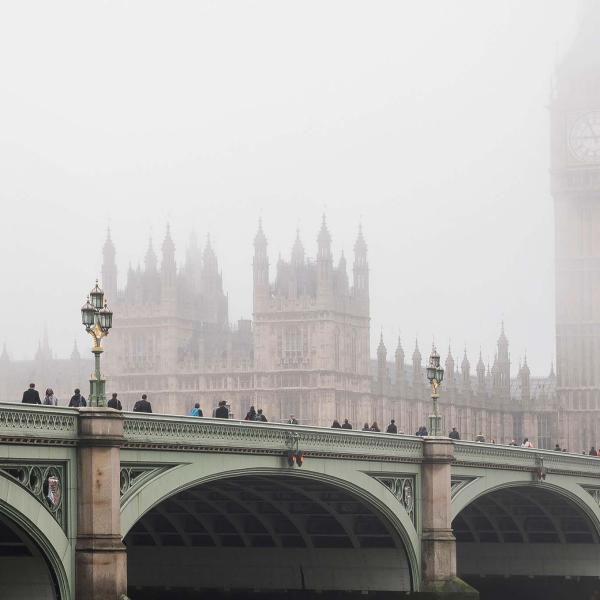The government is running two large schemes – the Job Retention Scheme (JRS) for employees and the Self-employment Income Support Scheme (SEISS) for the self-employed – and providing more generous benefits in an attempt to protect workers against income losses resulting from the coronavirus. Today we are publishing estimates of who is covered by the schemes and how their incomes are affected.
Inevitably, for schemes that had to be put together quickly and deliver support as fast as administratively possible, the temporary measures are not as well targeted as we would expect in normal times. On average these are very generous schemes, replacing more than 80% of net family income for both employees and the self-employed, but there is a lot of variation. Many of the self-employed will be left financially better off as a result of this crisis, while some will get no support at all.
On average both employees and the self-employed will now have the great majority of their income replaced if they are furloughed or their business closes completely.
Inevitably, for schemes that had to be put together quickly and deliver support as fast as administratively possible, the temporary measures are not as well targeted as we would expect in normal times. On average these are very generous schemes, replacing more than 80% of net family income for both employees and the self-employed, but there is a lot of variation. Many of the self-employed will be left financially better off as a result of this crisis, while some will get no support at all.
On average both employees and the self-employed will now have the great majority of their income replaced if they are furloughed or their business closes completely.
- On average, if employees are furloughed they will only lose about 12% of net family income, compared to 53% before the reforms.
- On average, if those for whom self-employment is their main source of earnings see their business close completely they will only lose about 14% of family income once SEISS is fully in place, compared to 44% before the reforms.
Some self-employed may struggle financially as they have to wait until early June to get cash through the SEISS. Some of them, however, can also claim benefits in the short run and many could be financially better off than if crisis had never happened.
- Almost half of the self-employed would see their family income fall by at least 40% in the short run if their work has dried up before the SEISS grants are paid in June. A quarter of self-employed people earning less than £50,000 a year do not have enough liquid assets (between themselves and any partner) to cover three months’ lost earnings, and 15% don’t have enough to cover a single month. This makes it important for the government to deliver quick access to loans and universal credit to ensure people avoid hardship.
- Many of the self-employed whose income dries up will receive both universal credit now and 80% of their historical earnings for three months at the start of June. Their total compensation is more than 80% of their earnings and could be more than 100%.
- If self-employed workers see only a small fall in their profits, half will have a family income more than 20% above its usual level once the SEISS is fully in place, since they get the full SEISS even if they only see a small reduction in their profits.
- A quarter of the self-employed will be financially better off than they would have been without the crisis even if their business shuts completely. This can happen if the 20% of lost earnings not made up by the SEISS is outweighed by the benefit giveaways. It can also happen if they would now – even in the absence of the coronavirus – be earning much less than they averaged from April 2016 to April 2019. In that case their current lost earnings are less than the they receive through the SEISS which is based on, higher, historical earnings.
Some people still get no income replacement
The JRS will not provide support for those who lose their job completely, who have to take unpaid leave to cover caring responsibilities (for example looking after their children), or who see a cut in their earnings but continue to work.
The SEISS will not cover all of the 5.1 million people who report positive self-employment income. We estimate that, very approximately:
The SEISS will not cover all of the 5.1 million people who report positive self-employment income. We estimate that, very approximately:
- 1.3 million people with some self-employment income (25% of them) will be ineligible because they received less than half of their income from self-employment.
- 225,000 (4%) will be ineligible because their self-employment profits were more than £50,000 a year
- 650,000 (13%) will be ineligible because they started their business since April 2019
These three groups overlap, so our rough estimate is that in total around 2 million people with some self-employment income (38% of them) will not have it covered by the SEISS. Those with employment income as well have access to the JRS for that part of their earnings. Among the 3.8 million people that receive more than half of their income from self-employment, we estimate that roughly 675,000 (18% of them) will be ineligible for the SEISS.
In addition to the 5 million people with some self-employment income, there are around 2 million people running their own company (as opposed to an unincorporated business, i.e. self-employment) who are eligible for the JRS in relation to their salary if they stop working. However, largely as a way of minimising tax payments, many owner-managers pay themselves a very small salary (often set at the National Insurance earnings threshold, which is currently £166 per week) and take the rest of their income in dividends. This means that the JRS will cover only a small part of their actual income.
Stuart Adam, a Senior Research Economist at the IFS and one of the authors of the report, said:
“Under pressure to come up with a workable scheme to support the self-employed at speed, the Chancellor has erred on the side of generosity for most. Being able to claim the full amount even if profits are affected only marginally will leave some self-employed benefitting substantially. The delay in payments will cause financial hardship for some. But the fact that they can claim benefits for the next three months, and then also claim the earnings replacement in early June, will mean many will ultimately lose little or no income overall. But some will fall through the gaps completely – including high earners and the newly self-employed – and others will see only part of their overall earnings covered, including many who combine self-employment with employment or whose business is set up as a company.”
In addition to the 5 million people with some self-employment income, there are around 2 million people running their own company (as opposed to an unincorporated business, i.e. self-employment) who are eligible for the JRS in relation to their salary if they stop working. However, largely as a way of minimising tax payments, many owner-managers pay themselves a very small salary (often set at the National Insurance earnings threshold, which is currently £166 per week) and take the rest of their income in dividends. This means that the JRS will cover only a small part of their actual income.
Stuart Adam, a Senior Research Economist at the IFS and one of the authors of the report, said:
“Under pressure to come up with a workable scheme to support the self-employed at speed, the Chancellor has erred on the side of generosity for most. Being able to claim the full amount even if profits are affected only marginally will leave some self-employed benefitting substantially. The delay in payments will cause financial hardship for some. But the fact that they can claim benefits for the next three months, and then also claim the earnings replacement in early June, will mean many will ultimately lose little or no income overall. But some will fall through the gaps completely – including high earners and the newly self-employed – and others will see only part of their overall earnings covered, including many who combine self-employment with employment or whose business is set up as a company.”











